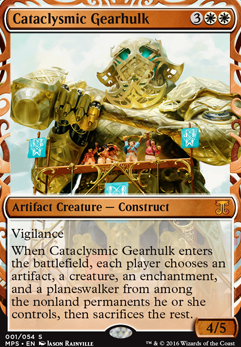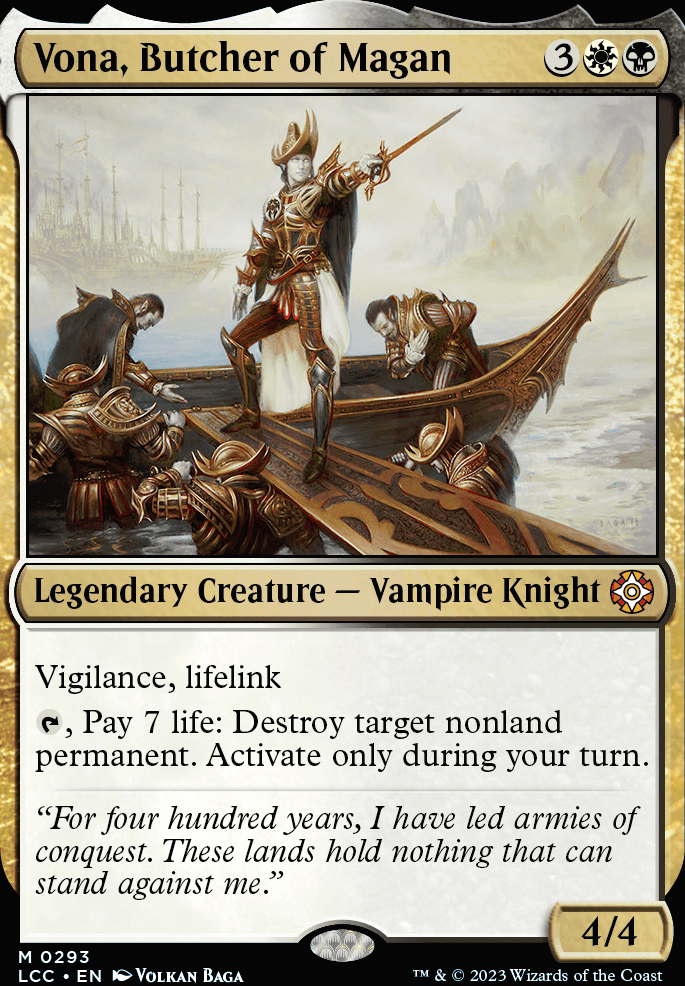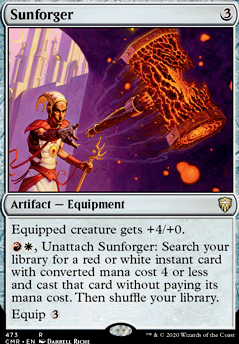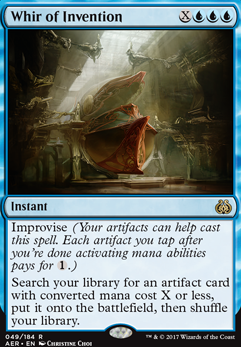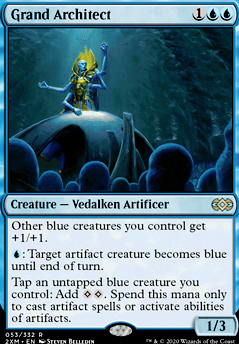Land (37)
- 1x Academy Ruins
- 1x Adarkar Wastes
- 1x Ancient Den
- 1x Ancient Tomb
- 1x Arcane Sanctum
- 1x Azorius Chancery
- 1x Caves of Koilos
- 1x Command Tower
- 1x Darksteel Citadel
- 1x Dimir Aqueduct
- 1x Godless Shrine
- 1x Hallowed Fountain
- 1x Homeward Path
- 1x Inventors' Fair
- 1x Irrigated Farmland
- 4x Island
- 1x Mana Confluence
- 1x Maze of Ith
- 1x Morphic Pool
- 3x Plains
- 1x Reflecting Pool
- 1x Reliquary Tower
- 1x Sea of Clouds
- 1x Seat of the Synod
- 2x Swamp
- 1x Temple of Deceit
- 1x Temple of Enlightenment
- 1x Temple of Silence
- 1x Underground River
- 1x Vault of Whispers
- 1x Watery Grave
Planeswalker (3)
Enchantment (1)
Creature (19)
- 1x Blightsteel Colossus
- 1x Burnished Hart
-
1x
Cataclysmic Gearhulk

-
1x
Duplicant

- 1x Ethersworn Canonist
- 1x Magister Sphinx
- 1x Master Transmuter
- 1x Muzzio, Visionary Architect
- 1x Myr Battlesphere
-
1x
Noxious Gearhulk

- 1x Padeem, Consul of Innovation
- 1x Phyrexian Metamorph
- 1x Solemn Simulacrum
- 1x Sphinx of the Steel Wind
- 1x Sphinx Summoner
-
1x
Torrential Gearhulk

- 1x Treasure Mage
- 1x Trinket Mage
-
1x
Trophy Mage

Artifact (15)
Commander (1)
Instant (18)
- 1x Anguished Unmaking
- 1x Arcane Denial
- 1x Commit / Memory
- 1x Counterspell
- 1x Cryptic Command
- 1x Cyclonic Rift
- 1x Disallow
- 1x Enlightened Tutor
-
1x
Fact or Fiction

- 1x Forbid
- 1x Mystical Tutor
- 1x Path to Exile
- 1x Return to Dust
- 1x Spell Crumple
- 1x Swan Song
- 1x Thirst for Knowledge
- 1x Vampiric Tutor
- 1x Whir of Invention
Sorcery (6)
Sideboard
Artifact (7)
Instant (5)
Suggestions
Updates Add
Comments
Attention! Complete Comment Tutorial! This annoying message will go away once you do!
Important! Formatting tips — Comment Tutorial — markdown syntax
Please login to comment
| Date added | 7 years |
| Last updated | 3 years |
| Exclude colors | RG |
| Legality | This deck is not Commander / EDH legal. |
| Rarity (main - side) | 13 - 4 Mythic Rares 46 - 8 Rares 19 - 3 Uncommons 13 - 0 Commons |
| Cards | 100 |
| Avg. CMC | 3.81 |
| Tokens | Bird 2/2 U, Copy Clone, Emblem Venser, the Sojourner, Myr 1/1 C, Wurm 3/3 C w/ Deathtouch, Wurm 3/3 C w/ Lifelink |
| Votes | |
| Ignored suggestions | |
| Shared with | |
| Based on | |
| Views |
